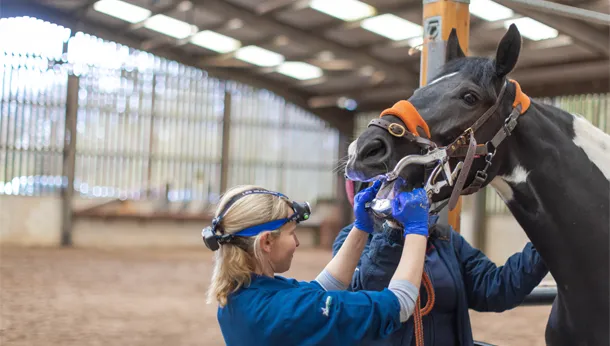Before a horse’s dental problems can be treated, they must be correctly diagnosed.
Some painful, serious dental conditions are difficult to diagnose during routine dental examinations and if your horse has ongoing problems, further diagnostic imaging is indicated.
Dental Imaging Facilities
Our excellent dental imaging facilities ensure accurate diagnosis and we are constantly updating our equipment and expertise in order to offer the best options for treatment of dental disease on site.
We offer a range of dental diagnostics, from free routine dental checks at the time of routine vaccination, to oral endoscopy, dental radiography and sinoscopy.

Portable Dental Endoscope
The portable dental endoscope allows real-time images of every part of your horse’s mouth to be viewed on screen during the examination and images can be archived for future reference.
This unit is particularly valuable in the diagnosis of valve diastemata, dental caries and fractured teeth.
These lesions can result in tooth root infection, gum disease and recession and periodontal disease that if untreated can result in sinusitis or infection in the jaw bone. Early diagnosis and treatment can prevent future problems.
Digital Radiography Machine
Our digital radiography machine produces quality images to aid accurate diagnosis of dental conditions. It is used most often for assessment of diastemata, fractures of teeth and bone, and assessment of potentially infected tooth roots and sinuses.
Sinoscopy involves direct imaging of the inside of the sinuses (air filled structures of the head) by inserting a flexible endoscopic camera through a small hole drilled through the skull.
This is usually performed under standing sedation at the clinic, and can be very useful when diagnosing conditions such as sinusitis. It can also enable imaging of the roots of the upper cheek teeth, thus aiding diagnosis of tooth root infections.
In addition, sinuses can be flushed out if they are filled with purulent material, which can relieve symptoms and allow more accurate radiographic images to be obtained.